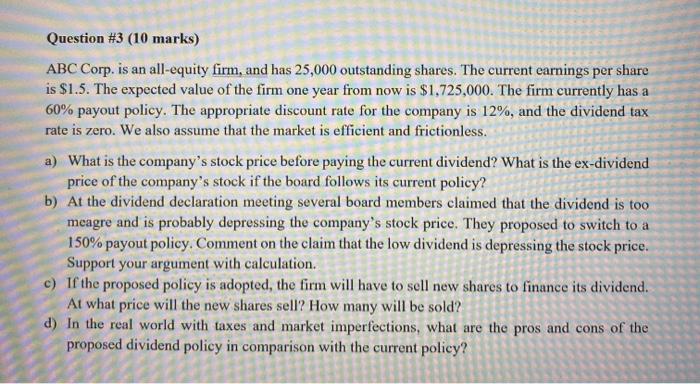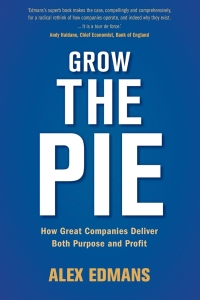Question #3 (10 marks) ABC Corp. is an all-equity firm, and has 25,000 outstanding shares. The current earnings per share is $1.5. The expected value of the firm one year from now is $1,725,000. The firm currently has a 60% payout policy. The appropriate discount rate for the company is 12%, and the dividend tax rate is zero. We also assume that the market is efficient and frictionless. a) What is the company's stock price before paying the current dividend? What is the ex-dividend price of the company's stock if the board follows its current policy? b) At the dividend declaration meeting several board members claimed that the dividend is too meagre and is probably depressing the company's stock price. They proposed to switch to a 150% payout policy. Comment on the claim that the low dividend is depressing the stock price. Support your argument with calculation. c) If the proposed policy is adopted, the firm will have to sell new shares to finance its dividend. At what price will the new shares sell? How many will be sold? d) In the real world with taxes and market imperfections, what are the pros and cons of the proposed dividend policy in comparison with the current policy? Question #3 (10 marks) ABC Corp. is an all-equity firm, and has 25,000 outstanding shares. The current earnings per share is $1.5. The expected value of the firm one year from now is $1,725,000. The firm currently has a 60% payout policy. The appropriate discount rate for the company is 12%, and the dividend tax rate is zero. We also assume that the market is efficient and frictionless. a) What is the company's stock price before paying the current dividend? What is the ex-dividend price of the company's stock if the board follows its current policy? b) At the dividend declaration meeting several board members claimed that the dividend is too meagre and is probably depressing the company's stock price. They proposed to switch to a 150% payout policy. Comment on the claim that the low dividend is depressing the stock price. Support your argument with calculation. c) If the proposed policy is adopted, the firm will have to sell new shares to finance its dividend. At what price will the new shares sell? How many will be sold? d) In the real world with taxes and market imperfections, what are the pros and cons of the proposed dividend policy in comparison with the current policy







